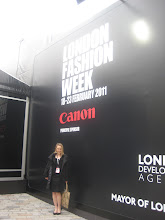
I had been to the British museum as a tourist when I first came to London 5 years ago.
For some reason I remember not having that much time to wander around during this visit but I do distinctly remember the Egypt section blowing my mind. The age of the relics and the history of the religion in the country was unlike anything I had heard of. The mummies were of particular interest, they were creepy and beautiful at the same time. Also the fact that Egyptians worshipped cats was just strange.
I have subsequently returned since I moved here but mostly to see specific exhibitions such as the Picasso drawings and the South African garden- for some reason I felt I had 'done' the museum.
However a good friend of mine had never been and I was appalled by this fact given that they themselves are British. I mean this is your own countries museum, but like most Londoners, not many of the British have been to their own unique attractions. So on a recent public holiday we joined the crowds of tourists to spend 3.5 hours of our lives lost in history.
First up on the agenda, the was the watch and clocks area. The progression of the technologies of these products throughout the ages was fascinating, the fact that alarm clocks used to have built in coffee making machines is amazing- can someone tell me why they stopped making this? It would be so useful!
Next up was the history of money. Some of you might be interested to know that prior to the 1920's 'wall street crash' gold was the only currency used as money. The value of the coins was determined purely by its weight. During the crash gold become a rare commodity and so paper was introduced as a satisfactory substitute.
I had to laugh at some of these initial prints of money, there are notes in history that represent a trillion yen and others a mere 10 shillings! Clearly this paper system was very fascinating at launch.
After some lunch we ventured to the Enlightenment room. This room holds a collection of objects which have significant relevance to points of time in the history of the world.
Objects range from actual animals and fauna to those which try to explain astronomy, religion and philsophy. You could spend hours looking at every piece in this room and still be intrigued.
By 5pm we were exhausted but there was one last necessary object to see. The stand out piece in the museum is of course the Rosetta Stone.
This stone is found in the Egyptian sculpture section which is a definite favourite of mine. If only for the shear size of the pieces and the dedication of those who would have spent hours carving them. I have to remind myself that back in this era there wasn't proper tools in order to create these sculptures within a short time span, so people dedicated years of their lives to carving out these maginificant creatures.
Anyway I digress, the rosetta stone is an Ancient Egyptian granodiorite stele inscribed with a decree which appears in three scripts: the upper one is in Ancient Egyptian hieroglyphs, the middle one in Egyptian demotic script, and the lower text in Ancient Greek. Because it presents essentially the same text in all three scripts it provided the key to the modern understanding of Egyptian hieroglyphs.
There was as expected a huge crowd around the object with a lot of cameras flashing to try and capture its magnificence. I think the theory behind the stone is more interesting than the stone itself, it is amazing to think that item is the reason we are able to understand so much written in history. Further that people spent time trying to understand history all the way back in BC196, it makes me wonder did they know the significance of what they were doing?
I was so glad to have revisited the museum and if I am in the area again I will definitely pop in. I now know I am far from having 'done' the British museum!
X






